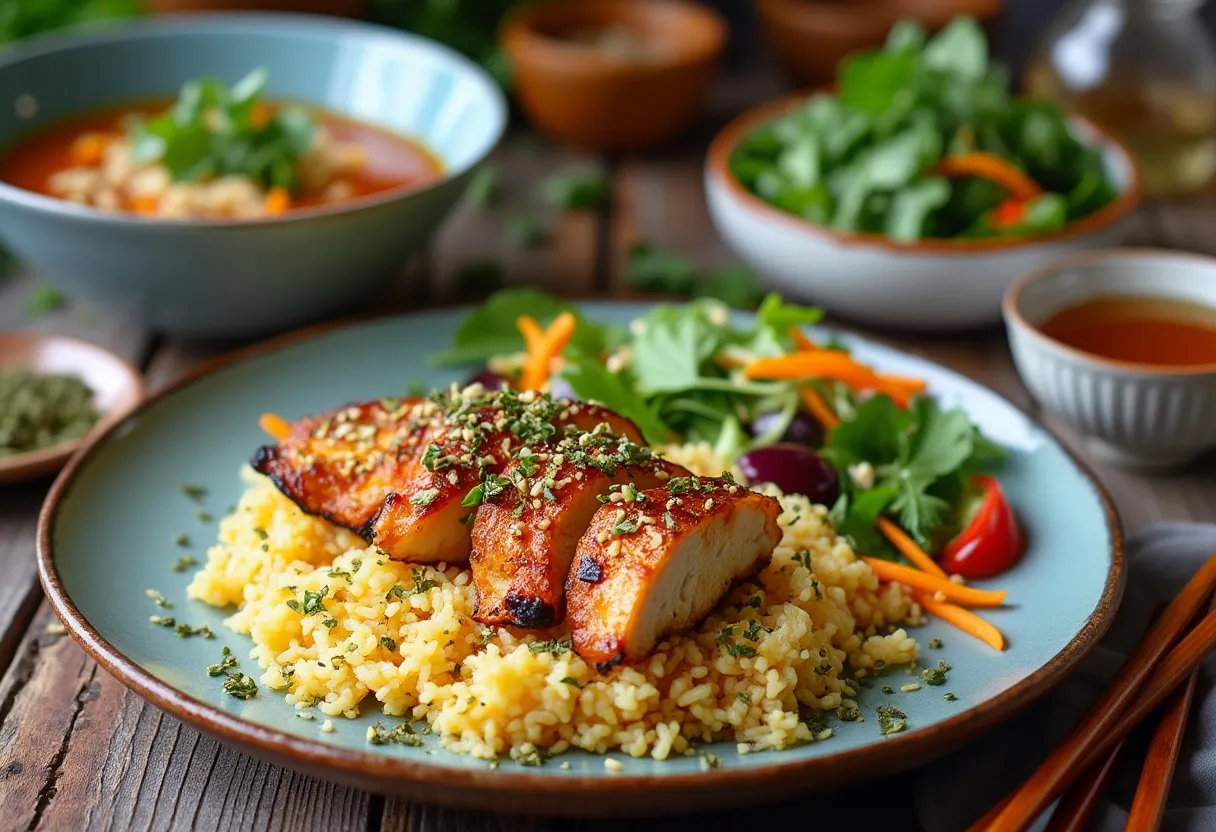
The Art of Layering: Mastering Vietnamese-French Flavors in Your Kitchen
Published on 9/23/2024
Isabella Nguyen • 9/23/2024
Introduction to Fusion Cuisine
As someone who spent their childhood amidst the aromatic hustle of a noodle shop in Hanoi and later honed my culinary skills at Le Cordon Bleu, I have always believed that food is a universal language that bridges contrasting cultures and flavors. Vietnamese and French cuisines, with their distinct characteristics, offer a palette bursting with possibilities for a delicious Vietnamese-French fusion experience.
The Importance of Flavors
Balancing Flavors
In Vietnamese cooking, we talk a lot about the harmonious balance of the five elements: sweet, sour, salty, bitter, and umami. When introducing French elements into this mix, it is essential to maintain this balance while incorporating French elegance and technique.
Sweetness
Sweet notes often come from ingredients like palm sugar or coconut milk in Vietnamese dishes, while in French cuisine, it might be a honey glaze or the addition of sugar to caramelize a dish.
Sourness
The tang of lime or a splash of vinegar can brighten a dish, cutting through rich flavors and intensifying others.
Saltiness
Traditional fish sauce, a staple in Vietnamese cuisine, and ingredients like soy sauce or even sea salt bring out savory undertones in dishes.
Bitterness and Umami
Radicchio or endive may lend bitterness, while umami can be accentuated with mushrooms or chicken broth, melding the Vietnamese love for umami with French deep flavors.
Technique: Layering Textures
Vietnamese dishes are celebrated for their contrasting textures, just as much as for their flavors. Introducing French techniques can elevate these textures, offering a complete sensory experience.
Crisping and Searing
A perfectly seared duck breast with crispy skin can meld beautifully with the soft, aromatic pho broth, showing how the luscious meets the light.
Steaming and Simmering
Steaming with traditional bamboo steamers helps preserve the delicate flavors of herbs and vegetables, while simmering in a cast iron pot allows flavors to deepen and meld together slowly.
The Role of Crunch:
Complement soft, velvety elements like a classic French béchamel or potato purée with crispy shallots or fried rice paper for a classic Vietnamese touch.
Ingredients: Key Players in Fusion
- Lemongrass: This versatile herb can refresh French classics with its citrusy notes.
- Butter: Adds richness to traditionally lean Vietnamese dishes such as herbal stuffed trout.
- Thyme: Subtle yet robust, thyme can harmonize with cilantro and basil in sour broth-based dishes.
Final Thoughts
Embracing the art of fusion cooking is like learning a new melody; it requires patience, practice, and a willingness to experiment. Some combinations might surprise you while others feel inherently right. This journey through blending Vietnamese freshness with French finesse is limitless and one I invite you to indulge in as you create artistic layers of flavor and texture in your kitchen. Devote time to play with these elements, set your cooking timer, and savor the art you are about to create.
Happy Cooking!
Isabella Nguyen
Sous Chef and Culinary Writer | I've been cooking
Isabella grew up in Hanoi, Vietnam, where her family operated a small noodle shop. She learned the art of Vietnamese cooking from her parents, particularly the importance of balancing flavors and textures in traditional dishes like pho and banh mi. After moving to France to study at Le Cordon Bleu, Isabella fell in love with French culinary techniques and began fusing them with the flavors of her Vietnamese heritage. Now working as a sous chef in Paris, she creates Vietnamese-French fusion dishes and writes a popular food column on modern fusion cuisine.